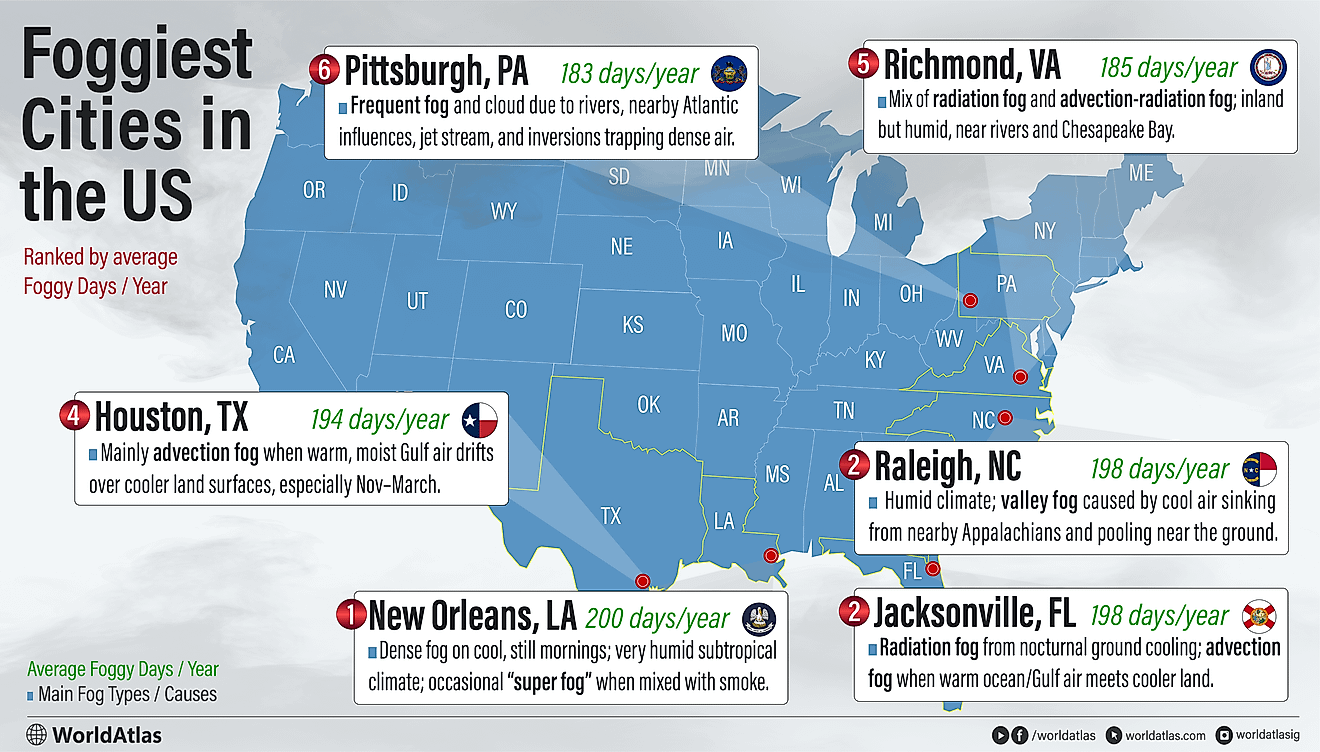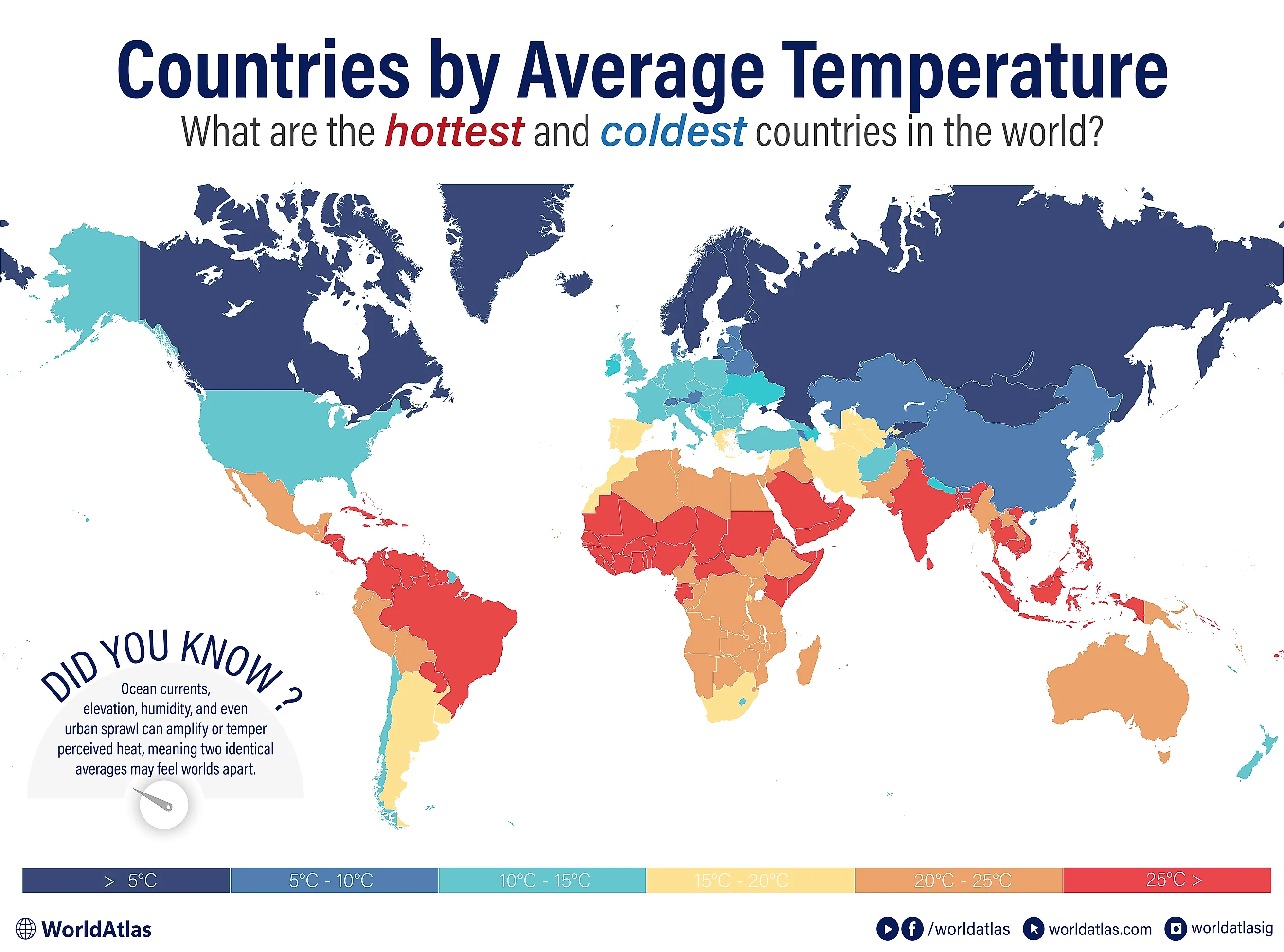
The 10 Coldest Countries In The World 2025
Using average land-surface temperatures compiled by Trading Economics, our ranking pinpoints the coldest countries in the world. Greenland, a dependency of Denmark, tops the list at a piercing -18.5 °C, its ice sheet dwarfing all European glaciers combined. Classic cold-weather giants Canada (-2.9 °C) and Russia (-2.8 °C) follow, their vast interiors radiating an unforgiving continental cold that hardens soil into permafrost for months on end.
Yet latitude or altitude alone cannot script permanent frost. Katabatic winds scouring Greenland's interior, Siberia's brutal continentality that denies maritime moderation, and Labrador's icy Humboldt cousin all sculpt distinctive microclimates. Humidity, day length, and sea-ice feedbacks dictate how minus numbers feel on human skin; -5 °C in still, dry Ulaanbaatar may seem gentler than +1 °C amid Reykjavík's sleet-laden squalls.
In 2025, the coldest countries in the world are Canada, Russia, and Iceland, with average yearly temperatures of -2.89 °C, -2.82 °C, and 1.77 °C.
The 10 Coldest Countries In The World
| Rank | Country/Region | Average Yearly Temperature (°C) |
|---|---|---|
| - | Greenland* | -18.47 |
| 1 | Canada | -2.89 |
| 2 | Russia | -2.82 |
| 3 | Iceland | 1.77 |
| 4 | Mongolia | 1.82 |
| 5 | Norway | 2.28 |
| 6 | Finland | 2.87 |
| 7 | Sweden | 3.38 |
| 8 | Kyrgyzstan | 4.28 |
| 9 | Tajikistan | 5.71 |
| - | Faroe Islands* | 6.78 |
| 10 | Estonia | 6.94 |
*Greenland and the Faroe Islands are self-governing dependencies of the Kingdom of Denmark.
Jump to a list of all countries ranked by average yearly temperature
1. Canada, -2.89 °C
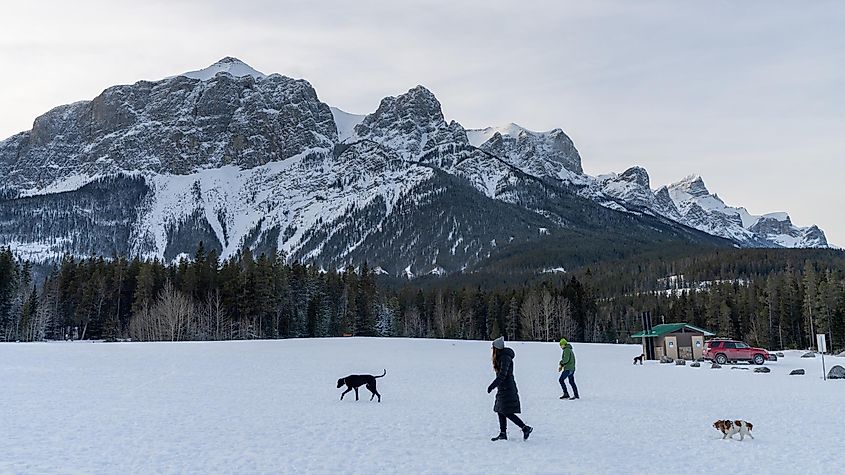
Canada is the world's second-largest country, spanning the Atlantic, Pacific, and Arctic Oceans and stretching from 41° N to 83° N. Its latitudinal range places two-thirds of its land within the higher middle and high latitudes, and roughly 40 % inside the Arctic Circle. Winters are severe across most regions: interior prairie cities average -15 °C in January and can plummet below -40 °C with wind chill, while the northern territories endure polar night, permafrost, and multi-year sea ice. Snow blankets non-coastal areas for four to six months; in the High Arctic, it persists year-round—the north hosts the planet's northernmost settlement, CFS Alert (82.5° N). Permafrost underlies about half the nation's landmas,s and climate warming is occurring at triple the global rate, threatening ice roads and tundra ecosystems. Despite the cold, 41 million Canadians cluster along the southern border, leaving a sparsely populated, frozen hinterland that defines Canada's reputation as one of the coldest countries on Earth.
2. Russia, -2.82 °C
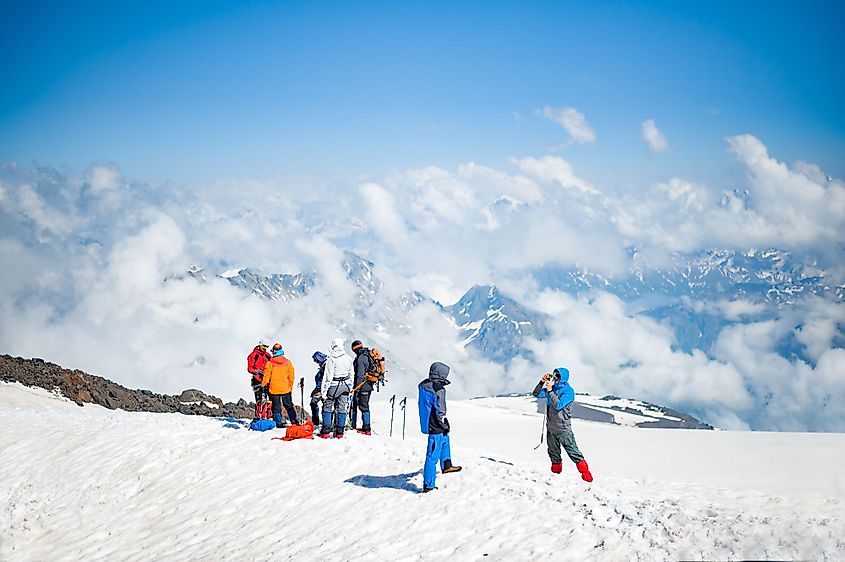
Spanning Eastern Europe and Northern Asia, Russia is by far the largest and, in many respects, the coldest inhabited country on Earth. Its vast sweep from the Baltic to the Pacific straddles eleven time zones, yet two-thirds of its territory lies within the sub-arctic and polar belts. Winter temperatures regularly plunge below -30 °C across Siberia; in Oymyakon, Sakha Republic, the mercury has reached a world record -71.2 °C, earning the settlement the title "Northern Pole of Cold." Permafrost underlies an area larger than the continental United States, shaping taiga forests, tundra, and massive peatlands that lock away stores of carbon. Rivers such as the Ob, Yenisei, and Lena freeze solid for half the year, while mighty Lake Baikal forms metre-thick ice. Even Moscow endures snow from November to April. Only the Black Sea coast enjoys a mild climate; everywhere else, Russia's identity, economy, and culture are inseparable from its formidable cold legacy.
3. Iceland, 1.77 °C
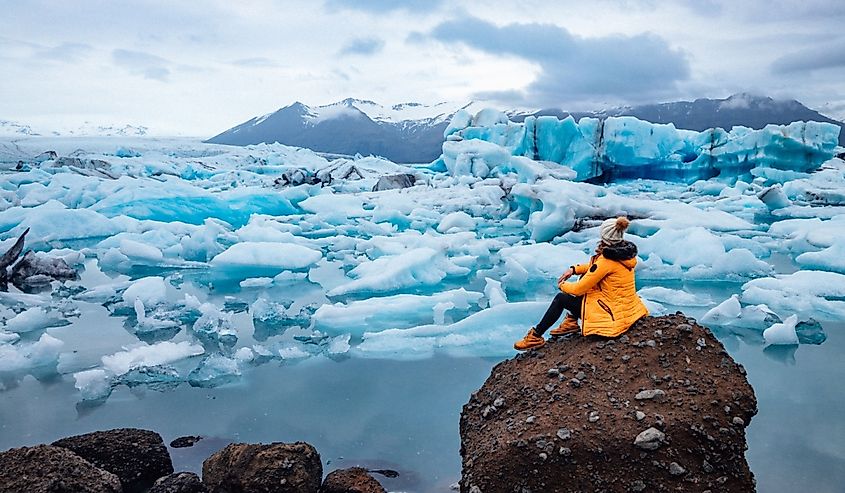
Iceland, perched atop the Mid-Atlantic Ridge just south of the Arctic Circle, is Europe's most sparsely populated nation and, year after year, among the world's coldest countries. While the Gulf Stream keeps its rugged coasts ice-free, average winter temperatures in Reykjavík hover near 0 °C, and the interior highlands remain frozen, windswept tundra year-round. About a quarter of the island is buried beneath glaciers whose meltwater feeds roaring rivers and waterfalls such as Gullfoss. Geothermal forces drive hundreds of geysers, supplying virtually all domestic heat and lighting, steaming outdoor pools beneath the northern lights. Settled by Norse seafarers in 874 AD, modern Iceland is a prosperous parliamentary republic of barely 400,000 people, renowned for literary sagas, gender equality, and almost 100% renewable power. Visitors bundle up to traverse black-sand beaches, crystal ice caves, and volcanic deserts, experiencing a stark marriage of fire and ice that epitomises life on the planet's northern fringe.
4. Mongolia, 1.82 °C
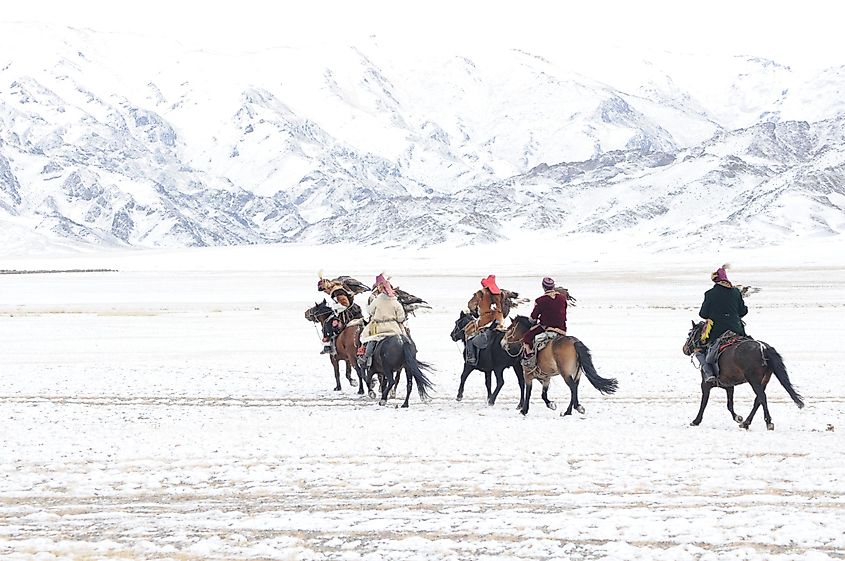
Mongolia, the world's 18th-largest country, straddles the frigid Mongolian Plateau between Siberia and the Gobi Desert. Its high altitude, clear skies and exposure to the Siberian Anticyclone combine to create an extreme continental climate: summer heat swings quickly to winters that routinely plunge below -30 °C. Ulaanbaatar, home to nearly half the population, posts an annual mean of -1.3 °C, making it the coldest national capital on the planet. Temperatures tumble even further in northern valleys such as Uvs and Khovsgol, while ferocious winter storms called zud can devastate the nomadic herders' livestock. Snow is light, but wind and bone-dry air intensify the chill. Despite over 250 cloudless days a year, earning Mongolia the nickname "Land of Eternal Blue Sky", sunshine offers little warmth during the long, bleak season. Traditional felt-covered gers, hearty mutton diets, and a resilient horse culture help Mongolians adapt to life in one of the planet's coldest inhabited regions.
5. Norway, 2.28 °C
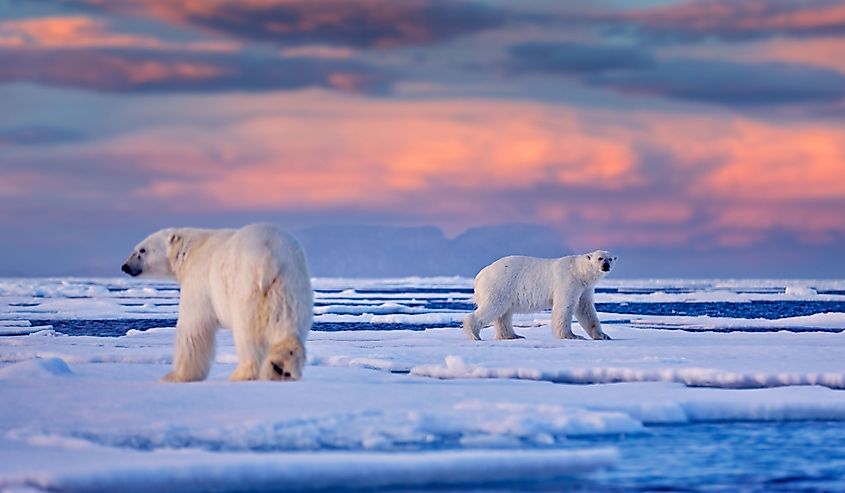
Norway spans the western Scandinavian Peninsula and stretches into the Arctic with Svalbard and Jan Mayen, encompassing the kingdom between 57° and 81° N. While the Gulf Stream softens its indented coast, Norway is still one of the planet's coldest populated countries: mountain plateaus, inland valleys, and Finnmark frequently drop below -40 °C, glaciers cloak high ranges, and polar night swallows northern settlements for months. Sub-Arctic or tundra climates dominate, with permafrost underpinning a third of the terrain and 400,000 lakes locked in ice for half the year. Yet 5.6 million resilient Norwegians have transformed the chill into opportunity. Vikings once explored in open longships; today's citizens harvest hydro-power and North Sea oil, ski from cradle to grave, and welcome visitors chasing fjords, Northern Lights, and midnight sun. Bolstered by the world's largest sovereign wealth fund and a top-ranked welfare state, Norway proves that prosperity can flourish on frozen ground.
6. Finland, 2.87 °C
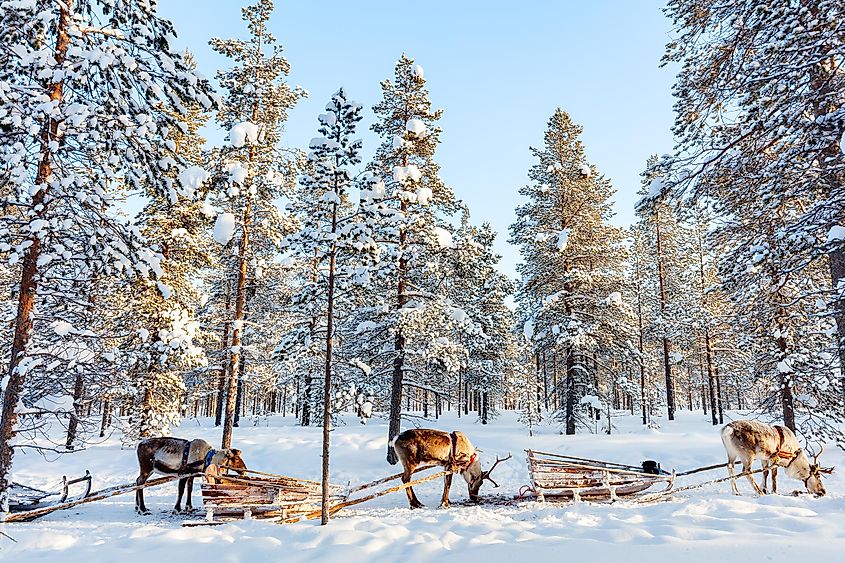
Finland, the northernmost nation in the European Union, straddles latitudes 60°-70° N and earns its place among the planet's deep-freeze destinations. Winters linger a full 100-200 days, blanketing forests and 180,000 lakes in snow while driving thermometers to -30 °C in the south and below -45 °C in Lapland. The sun may vanish entirely for 51 consecutive mid-winter days inside the Arctic Circle, only to repay the debt with 24-hour midsummer light. Despite the harsh latitude, the Baltic Sea and Gulf Stream temper coastal climates, producing marked contrasts: Helsinki's coastal breezes are merely brisk while the northern fells mirror Siberia. Survival here shaped a resilient society; saunas, Nordic-style welfare, world-leading education, and universal high-tech connectivity thrive alongside reindeer herding and aurora-lit tourism. Finland's vigilance against frost also forged elite athletes, from cross-country skiers to ice-hockey champions, and inspired the revered national epic Kalevala. Cold defines the culture, but innovation ensures warmth in spirit.
7. Sweden, 3.38 °C
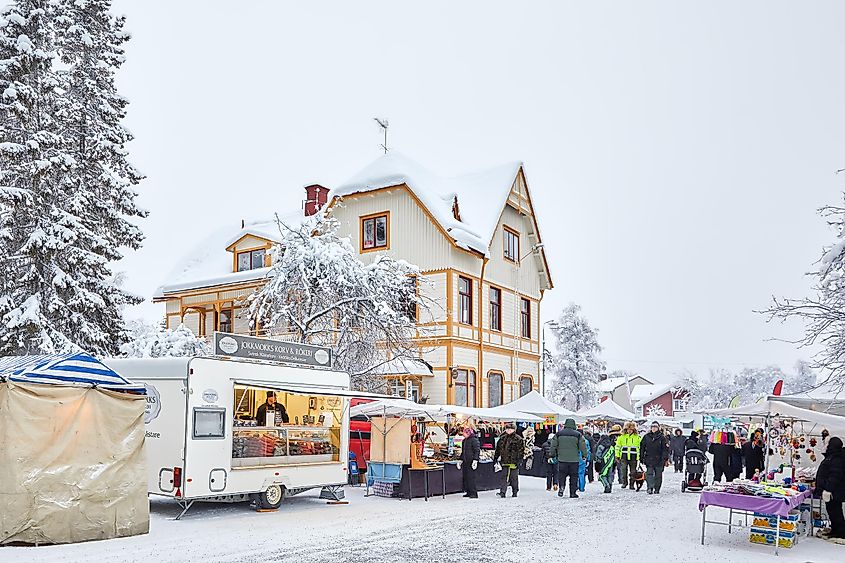
Stretching from 55° N to 69° N across the Scandinavian Peninsula, Sweden ranks among the planet's chillier inhabited nations. Winters sweep down from the Arctic, plunging the interior of Norrland to -20 °C routinely and once to a record -52.6 °C at Vuoggatjålme. About 15 % of the country lies above the Arctic Circle, where polar nights blanket Sámi settlements for weeks and permafrost shapes birch-tundra landscapes. Even in the more populous south, lakes and Baltic inlets freeze, and Stockholm averages -3 °C in January. These conditions sculpt a society adapted to snow: heated rail switches keep 10,000 km of track moving, district-heating pipes warm 90 % of homes, and icebreaker-escorted ports maintain year-round trade. Yet the Gulf Stream tempers Sweden just enough for forests to cloak 65 % of its territory and for cereal fields to edge toward 60° N, still making this Nordic kingdom a study in how modern infrastructure and social planning thrive today despite extreme cold.
8. Kyrgyzstan, 4.28 °C
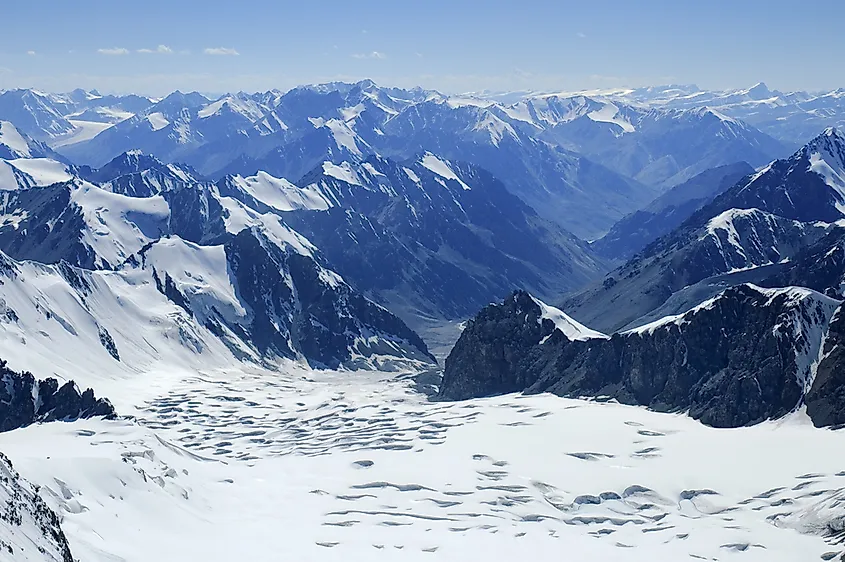
Landlocked Kyrgyzstan occupies the high heart of Central Asia, with more than 80 % of its 200,000 km2 territory rising into the Tian Shan and Pamir ranges. Peak Jengish Chokusu reaches 7,439 m, and the nation's average elevation exceeds 2,750 m, creating one of the world's harshest continental climates. Winters blanket alpine basins in -20 °C air and deep snow, while lofty plateaus endure 40 days below freezing and host over 6,500 glaciers that feed Central Asia's rivers. Even subtropical corners like the Fergana Valley suffer bitter cold snaps when Siberian air masses spill south. Farther from any ocean than any other country, Kyrgyzstan lacks maritime moderation; dramatic daily and seasonal temperature swings are the norm. These severe, dry winters shape nomadic traditions, yurt architecture, and a reliance on hardy livestock adapted to sparse mountain pasture. Rugged, glacier-sculpted landscapes make Kyrgyzstan a natural entry in any catalogue of the planet's coldest countries.
9. Tajikistan, 5.71 °C
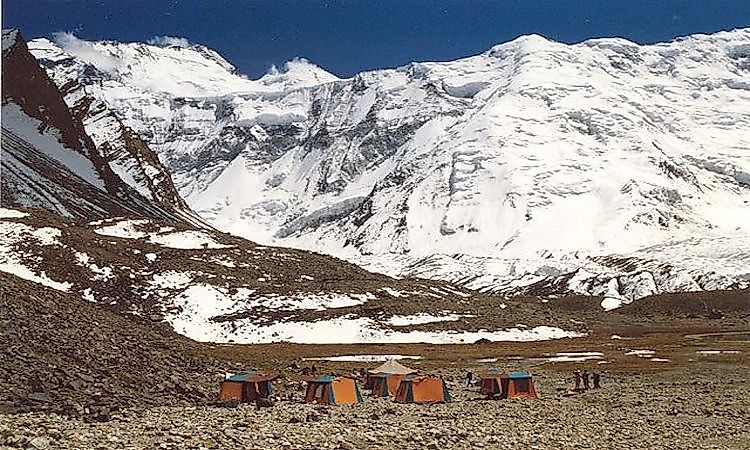
Mountain-locked Tajikistan earns its place among the planet's chill champions thanks to altitude more than latitude. Over 90 percent of the republic is tangled in the Pamir and Alay ranges, with an average elevation topping 3,000 m and summits such as 7,495 m Ismoil Somoni Peak. Here, thin air and katabatic winds drive winter temperatures below -40 °C; even midsummer nights at 4,000 m often freeze. Glaciers cloak some 6 % of national territory, among them Fedchenko, the longest glacier outside polar regions, and feed the Amu Darya and Syr Darya rivers. In remote Pamiri villages, snow can seal passes for six months, while Dushanbe's subtropical latitude still records sub-zero spells when Siberian highs spill south. The extreme continental regime brings annual temperature swings of 60 °C and scant humidity, producing crystalline skies and brutal UV exposure. Traditional stone-and-mud houses with low doors, thick felt rugs, and clay stoves reflect centuries of adaptation to one of Central Asia's highest, harshest cold zones.
10. Estonia, 6.94 °C
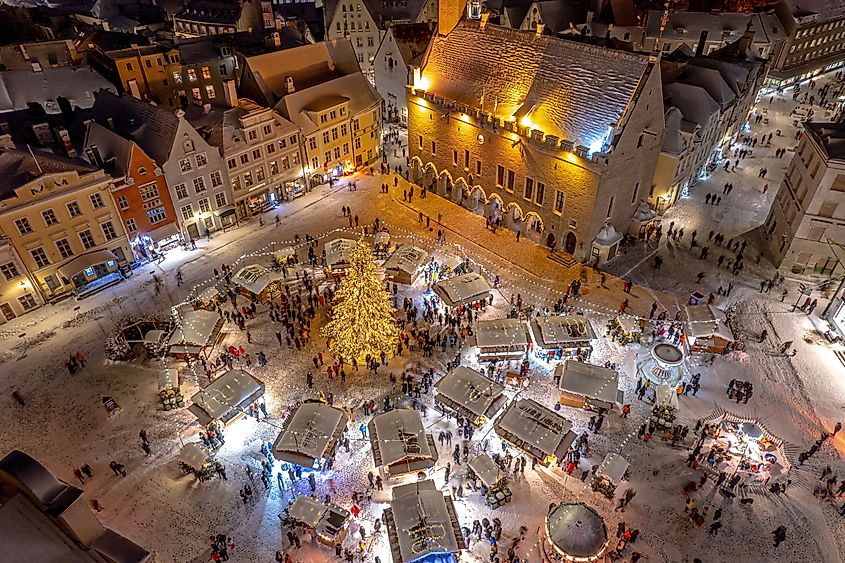
Perched on the eastern shore of the Baltic Sea at roughly 59° N, Estonia pairs Nordic latitudes with maritime influences to create winters that are long, dark, and bitingly cold. Average February temperatures hover around -4 °C, but icy incursions from the Arctic can plunge the mercury to the national record of -43.5 °C. Snow blankets most of the countryside for 75-135 days a year, and "white nights" give way to brief daylight windows in December when Tallinn sees just 21 hours of sunshine all month. Estonia's low, flat terrain, peppered with more than 1,500 lakes and 23 % peat-filled bogs, intensifies the chill, while prevailing westerlies bring moisture that turns to drifting snow inland. Despite the harsh climate, 48 % of the land remains forested, sheltering lynx, elk, and brown bears, and the population of 1.4 million enjoys a high-tech economy, Nordic-style social protections, and vibrant traditions such as smoke-sauna nights and midwinter festivity to beat winter.
Average Yearly Temperature By Country
| Rank | Country/Region | Average Yearly Temperature (°C) |
|---|---|---|
| - | Greenland* | -18.47 |
| 1 | Canada | -2.89 |
| 2 | Russia | -2.82 |
| 3 | Iceland | 1.77 |
| 4 | Mongolia | 1.82 |
| 5 | Norway | 2.28 |
| 6 | Finland | 2.87 |
| 7 | Sweden | 3.38 |
| 8 | Kyrgyzstan | 4.28 |
| 9 | Tajikistan | 5.71 |
| - | Faroe Islands* | 6.78 |
| 10 | Estonia | 6.94 |
| 11 | Latvia | 7.85 |
| 12 | Switzerland | 7.97 |
| 13 | North Korea | 8.1 |
| 14 | China | 8.4 |
| 15 | Lithuania | 8.62 |
| 16 | Belarus | 8.81 |
| 17 | Austria | 8.84 |
| 18 | Kazakhstan | 8.91 |
| 19 | Armenia | 9.02 |
| 20 | Liechtenstein | 9.12 |
| 21 | Andorra | 9.56 |
| 22 | Denmark | 9.59 |
| 23 | Isle of Man* | 9.89 |
| 25 | Chile | 10.04 |
| 24 | Czech Republic | 10.04 |
| 26 | United Kingdom | 10.14 |
| 27 | Poland | 10.24 |
| 28 | United States | 10.25 |
| 29 | Georgia | 10.35 |
| 30 | Slovakia | 10.51 |
| 31 | Ireland | 10.66 |
| 32 | Bhutan | 10.68 |
| 33 | Ukraine | 10.87 |
| 34 | Germany | 10.88 |
| 35 | New Zealand | 11.21 |
| 36 | Luxembourg | 11.28 |
| 37 | Slovenia | 11.31 |
| 38 | Montenegro | 11.37 |
| 39 | Netherlands | 11.68 |
| 40 | Bosnia and Herzegovina | 11.86 |
| 41 | Romania | 11.89 |
| 42 | Belgium | 11.92 |
| 43 | Macedonia | 12.26 |
| 44 | Moldova | 12.64 |
| 45 | Lesotho | 12.82 |
| 46 | Turkey | 12.92 |
| 47 | Japan | 12.99 |
| 48 | France | 13.01 |
| 49 | Serbia | 13.02 |
| 50 | Bulgaria | 13.03 |
| 51 | Hungary | 13.09 |
| 52 | South Korea | 13.32 |
| 53 | Croatia | 13.46 |
| 54 | Albania | 13.86 |
| 55 | San Marino | 13.94 |
| 56 | Nepal | 14.07 |
| 57 | Azerbaijan | 14.21 |
| 58 | Italy | 14.38 |
| 59 | Afghanistan | 14.67 |
| 60 | Monaco | 14.85 |
| 61 | Spain | 15.15 |
| 62 | Uzbekistan | 15.63 |
| 63 | Greece | 15.71 |
| 64 | Argentina | 15.95 |
| 65 | Lebanon | 16.28 |
| 66 | Portugal | 17.05 |
| 67 | Turkmenistan | 18.3 |
| 68 | South Africa | 18.58 |
| 69 | Uruguay | 18.92 |
| 70 | Morocco | 19.04 |
| 71 | Rwanda | 19.5 |
| 72 | Iran | 19.62 |
| 73 | Syria | 19.75 |
| 74 | Cyprus | 19.89 |
| 75 | Malta | 20.29 |
| 76 | Jordan | 20.4 |
| - | Palestine*** | 20.4 |
| 77 | Namibia | 20.52 |
| 78 | Burundi | 20.83 |
| 79 | Taiwan*** | 20.91 |
| 80 | Peru | 20.95 |
| 81 | Israel | 20.96 |
| 82 | Swaziland | 21.06 |
| 83 | Tunisia | 21.21 |
| 84 | Angola | 21.51 |
| 85 | Pakistan | 21.91 |
| 86 | Bolivia | 21.99 |
| 87 | Zambia | 22.04 |
| 88 | Zimbabwe | 22.07 |
| 89 | Botswana | 22.16 |
| 90 | Mexico | 22.22 |
| 91 | Australia | 22.32 |
| 92 | Ecuador | 22.33 |
| - | New Caledonia* | 22.69 |
| 93 | Libya | 22.91 |
| 94 | Malawi | 22.92 |
| 96 | Cape Verde | 23.08 |
| 95 | Madagascar | 23.08 |
| 97 | Tanzania | 23.22 |
| 98 | Uganda | 23.53 |
| 99 | Ethiopia | 23.75 |
| - | Macau** | 23.85 |
| 100 | Egypt | 23.95 |
| 101 | Algeria | 23.96 |
| 102 | Iraq | 24.05 |
| 103 | Mauritius | 24.07 |
| - | Hong Kong** | 24.09 |
| 104 | Congo | 24.33 |
| 105 | Guatemala | 24.35 |
| 106 | Comoros | 24.38 |
| 107 | Vanuatu | 24.39 |
| 108 | Myanmar | 24.44 |
| 109 | Sao Tome and Principe | 24.66 |
| 110 | Equatorial Guinea | 24.7 |
| - | French Polynesia* | 24.71 |
| 112 | Papua New Guinea | 24.77 |
| 111 | Republic of the Congo | 24.77 |
| 113 | Mozambique | 24.79 |
| 114 | Laos | 24.91 |
| 115 | Cameroon | 24.99 |
| 116 | India | 25.02 |
| 117 | Paraguay | 25.06 |
| 118 | Tonga | 25.12 |
| 119 | Gabon | 25.14 |
| 120 | Fiji | 25.2 |
| 121 | Dominican Republic | 25.23 |
| 122 | Colombia | 25.32 |
| 124 | Central African Republic | 25.39 |
| 123 | Honduras | 25.39 |
| 125 | Costa Rica | 25.42 |
| 126 | Vietnam | 25.46 |
| - | Mayotte* | 25.5 |
| - | Puerto Rico* | 25.52 |
| 127 | Kenya | 25.54 |
| 128 | Haiti | 25.59 |
| 129 | El Salvador | 25.85 |
| 130 | Liberia | 25.87 |
| 131 | Solomon Islands | 25.89 |
| 132 | Brazil | 25.92 |
| 133 | Yemen | 25.93 |
| 134 | Bangladesh | 26 |
| 135 | Venezuela | 26.01 |
| 136 | Panama | 26.05 |
| 137 | Indonesia | 26.17 |
| 138 | Belize | 26.42 |
| 139 | Nicaragua | 26.51 |
| 140 | Saudi Arabia | 26.52 |
| 141 | Bahamas | 26.56 |
| 142 | Guinea | 26.6 |
| 143 | St Vincent and the Grenadines | 26.64 |
| 144 | Jamaica | 26.65 |
| 145 | Guyana | 26.67 |
| 146 | Cuba | 26.7 |
| 147 | Malaysia | 26.77 |
| 148 | Grenada | 26.78 |
| 149 | Eritrea | 26.88 |
| 150 | Philippines | 26.91 |
| 151 | Barbados | 26.93 |
| 152 | Somalia | 27.1 |
| 153 | Suriname | 27.13 |
| 154 | Trinidad and Tobago | 27.15 |
| 155 | Sierra Leone | 27.22 |
| 156 | Palau | 27.26 |
| 157 | Ivory Coast | 27.3 |
| 158 | Dominica | 27.32 |
| - | Northern Mariana Islands* | 27.35 |
| 159 | Sri Lanka | 27.41 |
| 160 | St Lucia | 27.46 |
| 161 | Chad | 27.49 |
| - | American Samoa* | 27.5 |
| 162 | Thailand | 27.51 |
| 163 | Kuwait | 27.52 |
| - | Virgin Islands* | 27.54 |
| 164 | Seychelles | 27.58 |
| - | Guam* | 27.67 |
| 165 | Micronesia | 27.68 |
| 166 | Samoa | 27.72 |
| 167 | Nigeria | 27.73 |
| 168 | Kiribati | 27.78 |
| 169 | Sudan | 27.8 |
| 170 | Antigua and Barbuda | 27.83 |
| 171 | Togo | 27.92 |
| 172 | Cambodia | 27.95 |
| 173 | Singapore | 28.1 |
| 174 | St Kitts and Nevis | 28.14 |
| 175 | Maldives | 28.18 |
| 176 | Oman | 28.23 |
| 177 | Ghana | 28.26 |
| 178 | Marshall Islands | 28.29 |
| 179 | Niger | 28.34 |
| 180 | Djibouti | 28.6 |
| 181 | Benin | 28.61 |
| - | Cayman Islands* | 28.64 |
| 182 | Guinea Bissau | 28.7 |
| 183 | Bahrain | 28.88 |
| 184 | United Arab Emirates | 28.95 |
| 185 | Qatar | 29.07 |
| 186 | Gambia | 29.16 |
| 187 | Mauritania | 29.37 |
| - | Aruba* | 29.39 |
| 188 | Senegal | 29.69 |
| 189 | Mali | 29.72 |
| 190 | Burkina Faso | 29.96 |
| - | Nauru | - |
| - | Timor-Leste | - |
| - | Tuvalu | - |
| - | Brunei | - |
| - | South Sudan | - |
*Dependent or overseas territories: Aruba, Cayman Islands, Guam, U.S./British Virgin Islands, American Samoa, Northern Mariana Islands, Puerto Rico, Mayotte, French Polynesia, New Caledonia, Isle of Man, Faroe Islands, Greenland They remain under the sovereignty of another country (Netherlands, UK, U.S., France or Denmark) and handle only limited internal affairs.
**Special Administrative Regions (SARs): Hong Kong, Macau - These are parts of China with "a high degree of autonomy," but Beijing retains ultimate sovereignty.
***Partially or non-recognized states: Taiwan, Palestine - Each governs itself and claims, or is claimed as, statehood, yet neither has full UN membership (Taiwan is outside the UN; Palestine is a UN observer state).










